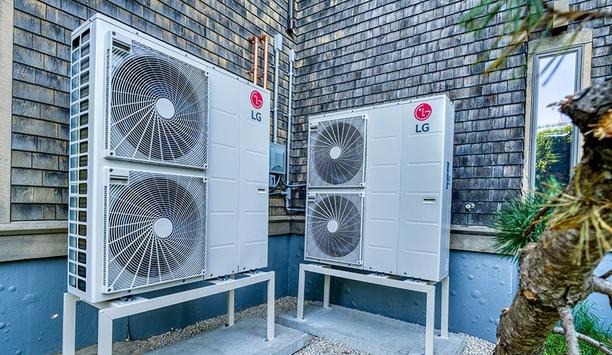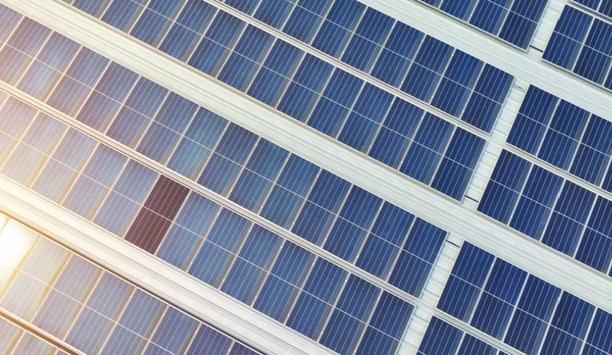How Does Building Design Impact HVAC Systems, And Vice Versa?
Editor Introduction
Building design and HVAC are interdependent aspects of creating a comfortable, healthy, energy-efficient, and functional indoor environment. How important is collaboration as architects and HVAC engineers seek to ensure that a building's form and function are harmonized with an efficient and effective HVAC system? We asked our Expert Panel Roundtable: How does building design impact HVAC systems – and vice versa?
Building design affects load, ventilation, and space requirements which all impact system choice, and system choice may create design constraints. This makes the interplay between building design and HVAC systems crucial. Orientation, insulation, window layout, and other sustainability elements of building design directly impact heating and cooling needs, which determine the HVAC system's load. How the space is being used, its expected occupancy, and layout all influence ventilation needs, further shaping HVAC requirements. Additionally, in retrofit projects, architectural constraints can potentially influence the HVAC system’s design, such as where equipment can be placed and whether there is existing ductwork. An HVAC system’s needs similarly influence building design because space is needed for equipment, ceiling height can be impacted, and acoustics need to be taken into consideration. To optimize both building and HVAC system design, architects and HVAC engineers should collaborate early to ensure a comfortable and energy-efficient space.
The relationship between building design and HVAC systems is deeply interdependent. A building’s shape, orientation, and insulation choices steer heating and cooling needs — south-facing windows invite warmth but demand smarter cooling, airtight designs curb energy costs but may require dedicated ventilation, and the addition of a water feature comes with humidity management considerations. Open or divided spaces impact airflow and certain building types may have more stringent IAQ requirements. HVAC requirements shape design: ceilings rise, or exterior screening is added to hide equipment, structural reviews are needed to confirm unit placement needs are met and that the equipment’s footprint and weight are well supported, and certain systems like geothermal heating may necessitate even earlier planning. Every building design choice can have an impact on the HVAC system and thus the future comfort of building occupants, making early collaboration between architects and engineers critical.
With the recent updates to ASHRAE 15 safety standards, it is essential for both building architects and HVAC engineers to collaborate closely in understanding these changes and their impact on their respective roles. Architects, in particular, need to deepen their knowledge of charge limitations for rooms. The refrigerant charge limit has significantly decreased, from 0.026 lbs. per cubic foot to a range of 0.013 to 0.0191 lbs./ft³, depending on whether the indoor unit is equipped with a refrigerant leak detector. However, this doesn’t signal the end of VRF systems. There are still effective ways to leverage refrigerants for comfort control. Manufacturers now offer tools like selection software to assist with system sizing and compliance. Moreover, branch boxes have been equipped with shutoff valves to minimize the release of leaked refrigerant into the space. The key to avoiding confusion lies in education, and one of the best resources for this is the ESCO Group.
Today’s building professionals are under immense pressure to develop facilities that not only meet performance and capacity demands now, but also in the future. This is especially true in mission-critical environments such as data centers. In this state of constant construction and expansion, vertical integration of the HVAC supply chain becomes crucial, particularly since equipment schedules can be planned up to six years in advance – and often before building sites have been secured. To ensure success, HVAC system design requires a balance of standardization to enable quick-turn repeatability as well as the flexibility to adjust to local conditions as sites are secured. In this way, purpose-built modular systems that can be engineered in advance and deployed in phases are often more advantageous than large Central Utility Plant (CUP) infrastructures. During the process, manufacturers must continue to work alongside building teams to adjust HVAC designs as application requirements progress.
Building design can significantly impact HVAC system design, performance and efficiency by influencing factors like energy consumption, indoor air quality, and comfort levels, based on building orientation, envelope design, and space allocation. Daikin’s broad range of commercial HVAC equipment provides flexibility for the wide range of building design variables and occupant needs previously described. For example, rooftop products are commonly applied to one- and two-story commercial buildings with flat roofs. Whereas chiller or Variable Refrigerant Volume (VRV) systems are typical for multi-story commercial buildings such as offices, hotels and mixed-use facilities. The flexibility of VRV systems can also be desirable for buildings with many different unique interior spaces. Then, there’s that one little area that needs its own stand-alone comfort control – a great application for ductless systems. As every building is different, it is important to measure continuously its mechanical systems' performance.
Design and HVAC systems have a codependent relationship. Building designs impact HVAC systems by influencing equipment placement, energy efficiency, and system sizing based on layout, orientation, and materials. At the same time, HVAC systems influence design by requiring structural accommodations, ventilation planning, and space allocation for equipment, all of which affect aesthetics, functionality, and comfort. Collaboration between the entire project team, including architects, engineers, contractors, and building owners — at the earliest stages of project development — will provide the strongest results for optimal building design, system performance, occupant comfort, and, ultimately, indoor environmental quality (IEQ).
We are living in an era where optimized energy usage is paramount. As responsible global citizens, we have a responsibility to future generations to provide sustainable solutions and mitigate climate change. Heating, ventilation, and air conditioning (HVAC) systems can account for up to 60% of a building's total energy consumption, making them a significant contributor to greenhouse gas emissions. This pushes us to create better systems and components, strictly adhering to standards to reach a higher energy efficiency ratio consistently. However, energy savings cannot be achieved solely through HVAC systems; buildings equipped with adequate insulation, air distribution systems, and automated airflow control in line with energy efficiency standards will provide the highest level of resource optimization. Moreover, properly trained technicians are essential for maintaining and operating these systems. While standards set by AHRI, ANSI and ASHRAE provide a foundation for energy-efficient building design, it is our responsibility as HVAC engineers to push beyond these standards and create sustainable solutions.
Building design has a direct impact on HVAC system performance, influencing factors such as airflow, equipment placement and system efficiency. Poorly planned layouts can lead to inefficient air distribution, increased energy consumption, and installation challenges. Likewise, HVAC systems must be designed to complement the structure’s layout, ensuring optimal climate control and energy efficiency. RLS press-to-connect fittings play a crucial role in adapting HVAC systems to diverse building designs, streamlining installation in complex layouts while maintaining system reliability. By eliminating the need for brazing, RLS fittings enable faster and safer connections, even in challenging architectural settings. As building designs continue to evolve to prioritize sustainability and flexibility, HVAC systems, and the methods used to install them, must also adapt to meet modern efficiency and performance standards.
Editor Summary
Ignoring the relationship between building design and HVAC systems can lead to oversized or undersized systems, energy inefficiencies, comfort issues, poor indoor air quality, and increased operational costs. As our Expert Panelists point out, deploying a holistic and collaborative approach can avoid these pitfalls and ensure successful building projects.
Expert Commentary
From A To L: Your A2L Transition Guide
DownloadLeveraging Radiant And Hydronics To Help Achieve Decarbonization Goals
DownloadSealed Connectors In Harsh Environments
DownloadPowering And Cooling Next Generation Data Centers
DownloadDebunking Myths To Promote A Bright Future For Heat Pumps
Download

















